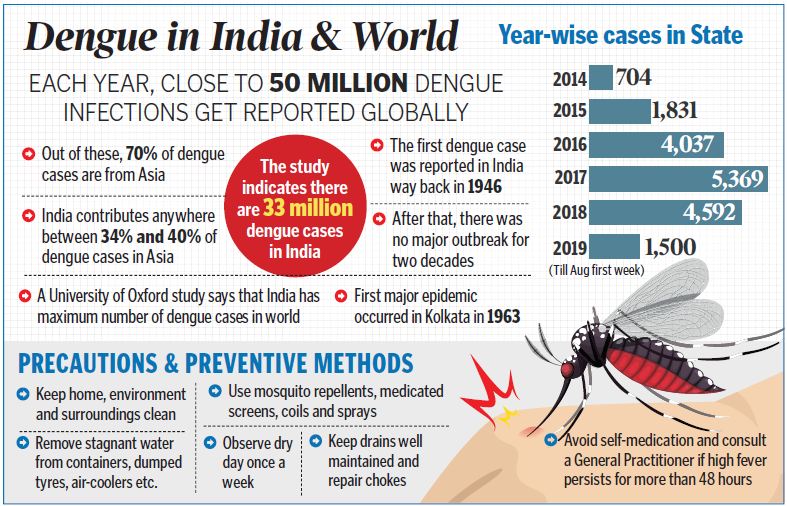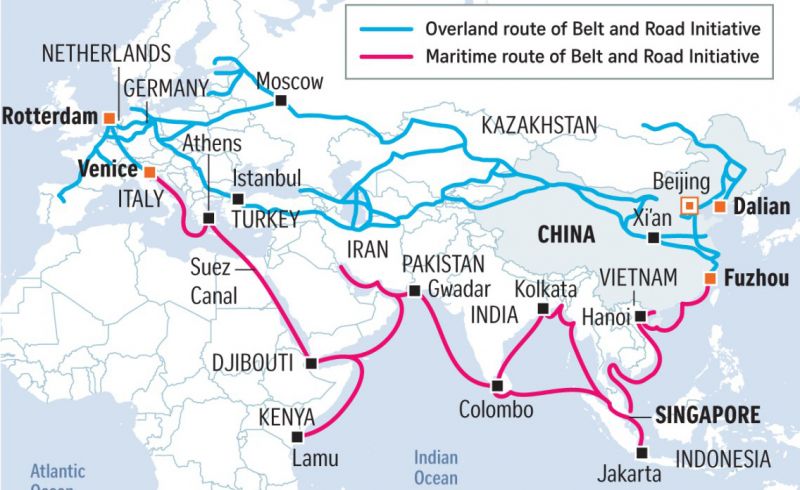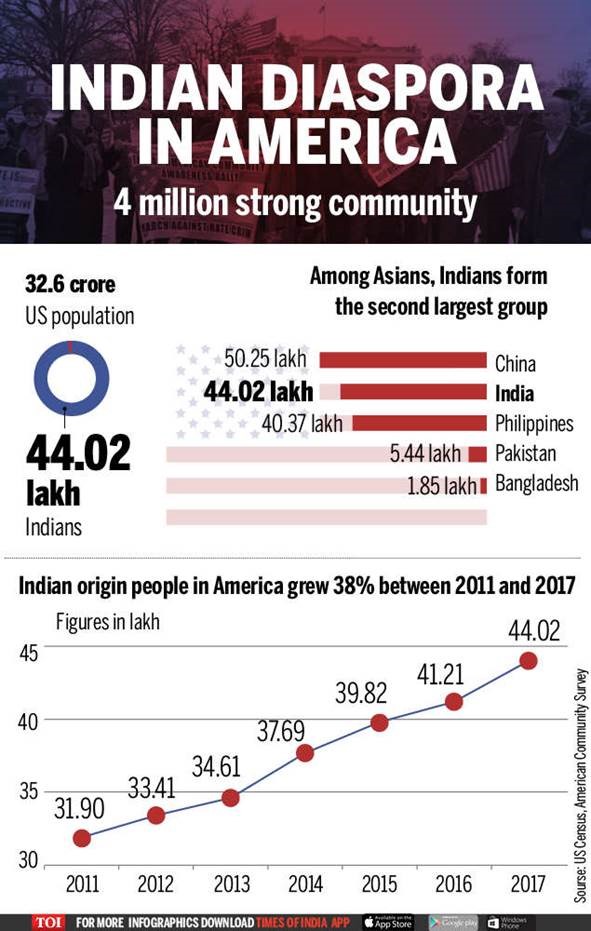Contents
- Dengue, JE strike as Assam battles COVID-19
- China suggests shift in BRI approach
- H-1B visa reform prioritising US degree holders
- IMD Heatwave alert: Delhi, Punjab, Haryana
- Phase-1 trial: Adenovirus COVID-19 vaccine found safe
- Extend loans without fear of 3Cs: FM
DENGUE, JE STRIKE AS ASSAM BATTLES COVID-19
Focus: GS-III Science and Technology
Why in news?
- Assam is facing crisis through a series of viral and pest attacks, Districts from different parts of Assam have reported cases of dengue and acute encephalitis syndrome.
- The heavy rainfall in the northern parts of the State had seen two rivers – Jia-Bharali and Puthimari – flowing above the danger mark.
- 2,980 people across three villages having been affected by the flood.
- A major worry for the Animal Husbandry department is preventing African swine fever (ASF) from getting to domestic pigs in flood-prone areas.
Japanese encephalitis
- Japanese encephalitis virus (JEV) is a flavivirus related to dengue, yellow fever and West Nile viruses, and is spread by mosquitoes.
- JEV is the main cause of viral encephalitis in many countries of Asia with an estimated 68 000 clinical cases every year.
- JEV is transmitted to humans through bites from infected mosquitoes of the Culex species (mainly Culex tritaeniorhynchus).
- There is no cure for the disease. Treatment is focused on relieving severe clinical signs and supporting the patient to overcome the infection.
- Safe and effective vaccines are available to prevent JE.
Dengue fever
- Dengue fever is a mosquito-borne tropical disease caused by the dengue virus.
- In a small proportion of cases, the disease develops into severe dengue, also known as dengue hemorrhagic fever, resulting in bleeding, low levels of blood platelets and blood plasma leakage, or into dengue shock syndrome, where dangerously low blood pressure occurs.
- Dengue is spread by several species of female mosquitoes of the Aedes type, principally A. aegypti.
- Dengue is essentially a tropical disease that occurs in the countries around the Equator, hot weather and intermittent rainfall favour the sustenance of Aedes aegypti the vector transmitting the dengue virus
- Dengue is caused by virus (DENV of 4 types)
- National dengue day is observed on May 16th in India.

-Source: The Hindu
CHINA SUGGESTS SHIFT IN BRI APPROACH
Focus: GS-II Indian Economy
Why in news?
- China has hinted at a shift in how it will pursue its signature Belt and Road Initiative (BRI) amid growing concerns about debt repayments from many partner countries because of the coronavirus (COVID-19) pandemic.
- In recent weeks, China has faced calls from countries in Asia and Africa to delay or waive debt repayments.
Details
- China will focus on quality in the joint pursuit of the BRI, and seek to advance infrastructure connectivity.
- China would focus on achieving shared growth through consultation and collaboration and would work with BRI partners for mutually beneficial outcomes.
- The world’s debt to China grew 10 times between 2000 and 2017, with developing countries owing $380 billion to China.
What is Belt and Road Initiative (BRI) One Belt One Road (OBOR)?

- One Belt One Road (OBOR), also called the Belt and Road Initiative (BRI), the brainchild of Chinese President Xi Jinping, is an ambitious economic development and commercial project that focuses on improving connectivity and cooperation among multiple countries spread across the continents of Asia, Africa, and Europe spanning about 78 countries.
- Initially announced in the year 2013 with the purpose of restoring the ancient Silk Route that connected Asia and Europe.
- The project involves building a big network of roadways, railways, maritime ports, power grids, oil and gas pipelines, and associated infrastructure projects.
- The project covers two parts. The first is called the “Silk Road Economic Belt,” which is primarily land-based and is expected to connect China with Central Asia, Eastern Europe, and Western Europe.
- The second is called the “21st Century Maritime Silk Road,” which is sea-based and is expected to will China’s southern coast to the Mediterranean, Africa, South-East Asia, and Central Asia.
- Landlocked Nepal has recently joined OBOR by signing a deal that will help it improve cross-border connectivity with China, and Pakistan is set to benefit from the $46 billion China Pakistan Economic Corridor (CPEC) that will connect southwestern China to and through Pakistan, allowing access to Arabian Sea routes.
-Source: The Hindu
H-1B VISA REFORM PRIORITISING US DEGREE HOLDERS
Focus: GS-II International Relations
Why in news?
- US lawmakers on 22nd May 2020, reintroduced a fine-tuned legislation aimed at reforming the skilled guest worker programme to prevent flight of American jobs and outsourcing, while giving priority to absorbing US-educated foreign technology professionals.
- Administration estimates around 65% of H-1B visas go to Indians.
Details
- The bill would prioritise American workers and restore fairness in visa programmes for skilled foreign workers who are educated in the U.S.
- The law would closing loopholes that have been exploited by body-shopping companies specialising in outsourcing work.
- This law ensures visa applicants who honed their skills at American colleges and universities are a priority over the importation of more foreign workers.
H-1B Visa
- The H-1B is a United States visa under the Immigration and Nationality Act, and it is one of the most popular visas for foreigners visiting the US for business or trade purpose.
- It is a non-immigrant visa that allows U.S. companies to employ foreign workers in speciality occupations that require theoretical or technical expertise.
- Speciality occupations include specialized fields like IT, finance, accounting, architecture, engineering, mathematics, science, medicine, etc. which usually require a bachelor’s degree or higher.
- US employers wishing to bring in staff for long-term assignment prefer H1B visa because its application is quicker than applying for a US Green Card.
What is a Green Card?
- A green card is a colloquial name for the identification card issued by U.S. Citizenship and Immigration Services to permanent residents, who are legally allowed to live and work in the U.S. indefinitely. Green cards got their nickname because they were green in color from 1946 to 1964.
- In 2010 they became green again, but the nickname persisted during the intervening decades of blue, pink and yellow “green cards.”
- The green card is a permanent resident ID issued to immigrants in the U.S.
- The green card lottery gives away up to 55,000 annual permanent visas to other countries.
- Permanent residents can be fined or jailed for not having their green card on their person.
- Cards must be renewed every 10 years.
Indian Diaspora in the U.S.

- Immigrants from India first arrived in the United States in small numbers during the early 19th century, primarily as low-skilled farm laborers.
- In recent decades the population has grown substantially, with 2.4 million Indian immigrants residing in the United States as of 2015.
- This makes the foreign born from India the second-largest immigrant group after Mexicans, accounting for almost 6 percent of the 43.3 million foreign-born population.
-Source: Times of India
IMD HEATWAVE ALERT: DELHI, PUNJAB, HARYANA
Focus: GS-III Environment and Ecology
Why in news?
Severe heatwaves are likely to impact parts of northwest, central and peninsular India in next four to five days, while many parts of northeast India will experience very heavy to extremely heavy rainfall during the same period: India Meteorological Department (IMD).
Under the influence of converging strong south-westerly winds from the Bay of Bengal– Northeast India is likely to experience heavy to very heavy rainfall with extremely heavy falls from May 25 to 27.
Details
- IMD has issued an orange alert in Delhi, Punjab, Haryana, and Chandigarh from May 24 to 27 for heatwave, in west and east Rajasthan for heatwave and severe heatwave; and in Vidarbha for heat wave.
- An orange alert is issued when a heatwave is likely to persist for more than four days or a severe heatwave for more than two days.
- There is a high risk of heat-related illnesses such as a heat stroke for people exposed to the sun for prolonged hours or doing heavy work; children, elderly and people with chronic diseases are also vulnerable.
- The heatwave is likely to affect relief and rehabilitation work related to the coronavirus disease (Covid-19) pandemic that is ongoing in many parts of the country.
- However, with a lockdown still in effect across India, albeit with considerable relaxation of restrictions, there is not likely to be as much movement of people or vehicles as there might have been otherwise.
What is a heat wave?
- A Heat Wave is a period of abnormally high temperatures, more than the normal maximum temperature that occurs during the summer season in the North-Western and South-Central parts of India.
- Heat Waves typically occur between March and June, and in some rare cases even extend till July. The extreme temperatures and resultant atmospheric conditions adversely affect people living in these regions as they cause physiological stress, sometimes resulting in death.
- Higher daily peak temperatures and longer, more intense heat waves are becoming increasingly frequent globally due to climate change.
Criteria for Heat Waves
- The Indian Meteorological Department (IMD) has given the following criteria for Heat Waves:
- Heat Wave need not be considered till the maximum temperature of a station reaches at least 40°C for Plains and at least 30°C for Hilly regions.
- When the normal maximum temperature of a station is less than or equal to 40°C, Heat Wave Departure from normal is 5°C to 6°C and Severe Heat Wave Departure from normal is 7°C or more.
- When the normal maximum temperature of a station is more than 40°C, Heat Wave Departure from normal is 4°C to 5°C and Severe Heat Wave Departure from normal is 6°C or more.
- When the actual maximum temperature remains 45°C or more irrespective of normal maximum temperature, heat waves should be declared.
What causes heat waves?
- All statistics on heat waves listed above refer to trends between March and June, but there’s no evidence that there are more heat waves in March as opposed to April or May.
- The Indian Ocean temperatures are also rising faster than the other oceans, and this, too, may be reducing moisture over the Indian mainland, thus playing some part in longer stretches of hot days.
- Deforestation, the heat-island effect, and industrial pollution are also being blamed for exacerbating heat waves.
- According to the MET Department, the presence of an anti-cyclonic circulation over south Pakistan and neighbouring regions is the reason behind the hot winds prevailing over the entire northwest India.
- Although Global Warming can be cited as reason, there isn’t enough evidence on the mechanism of how Global Warming could be the cause.
-Source: Hindustan Times
PHASE-1 TRIAL: ADENOVIRUS COVID-19 VACCINE FOUND SAFE
Focus: GS-III Science and Technology
Why in news?
A phase-1 trial using a single dose of a vaccine (Ad5-nCoV) that uses a recombinant adenovirus type-5 vector that carries the genetic material that codes for spike glycoprotein of novel coronavirus was found to be safe, well-tolerated and able to generate immune responses against the virus.
Details
- The adenovirus is a weakened common cold virus.
- It was the first-in-human study of the adenovirus type-5 vectored COVID-19 vaccine.
- The vaccine was found to elicit neutralising antibodies, which peaked at day 28 post-vaccination, while rapid specific T-cell responses peaked at day 14 after vaccination.
- The antibody response to the vaccine in the high-dose group was slightly greater than that in the middle-dose and low-dose groups.
Click Here to read more about Human trials and the phases
-Source: The Hindu
EXTEND LOANS WITHOUT FEAR OF 3CS: FM
Focus: GS-III Indian Economy
Why in news?
Finance Minister Nirmala Sitharaman on 23rd May 2020 said banks had been asked to extend loans automatically to eligible borrowers without ‘fear of 3Cs — CBI, CVC and CAG’.
Details
- Clear instructions had been given in a meeting with CEOs and MDs of public sector banks and financial institutions on 22nd May that the banks should not be scared to extend loans as 100% guarantee is being given by the government.
- It is being said that the genuine bonafide decisions in the banking sector are being impacted because of the worry of undue harassment by 3Cs — Central Bureau of Investigation (CBI), Central Vigilance Commission (CVC) and Comptroller and Audit General (CAG).
- The Finance Ministry has taken several steps to allay those fears including withdrawing some of the notifications which were causing fear among bankers.
Click Here to read more about CVC
-Source: The Hindu




